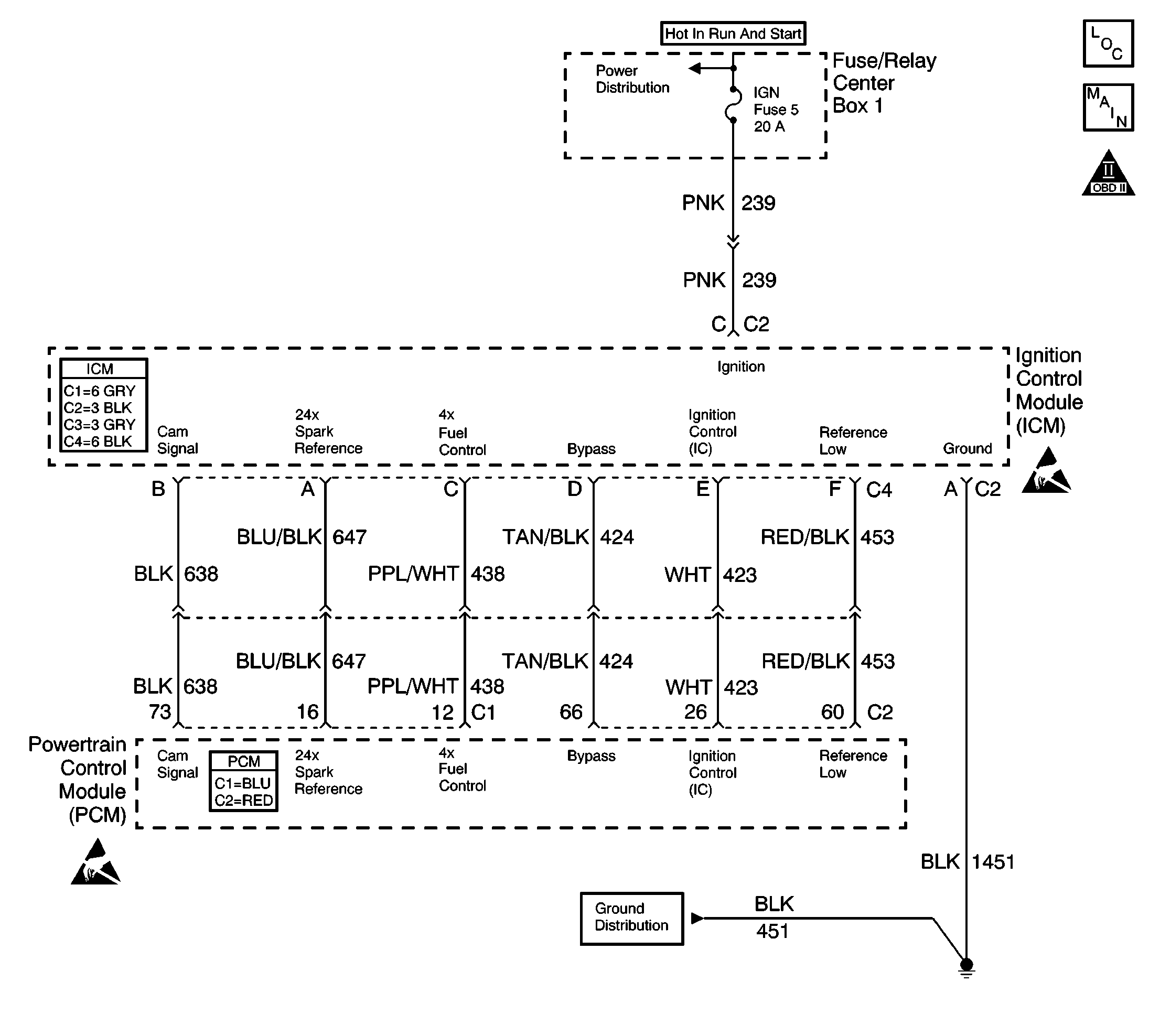
Circuit Description
The ignition control module (ICM) creates a 4X signal and a 24X signal that is used by the powertrain control module (PCM) for ignition and fuel control. In this diagnostic test, the PCM checks for 4X reference pulses being received without 24X reference pulses. When the engine is running and the PCM is receiving 4X reference pulses without 24X reference pulses and the 24X reference signal line is low for 4 seconds, DTC P1323 is set.
Conditions for Running the DTC
| • | DTC P0340 is not set. |
| • | At least 7 CAM edges have been received this engine run cycle. |
| • | At least one CAM reference pulse was received within the last 4 seconds. |
| • | The engine speed is more than 496 RPM. |
Conditions for Setting the DTC
No 24X reference pulses received by the PCM and the line is low for 4 seconds.
Action Taken When the DTC Sets
| • | The PCM will illuminate the malfunction indicator lamp (MIL) when the diagnostic runs and fails. |
| • | The PCM will record operating conditions at the time the diagnostic fails. This information will be stored in the Freeze Frame and Failure Records. |
Conditions for Clearing the MIL/DTC
| • | The PCM will turn the MIL OFF after three consecutive drive trips that the diagnostic runs and does not fail. |
| • | A last test failed, or current DTC, will clear when the diagnostic runs and does not fail. |
| • | A History DTC will clear after forty consecutive warm-up cycles with no failures of any emission related diagnostic test. |
| • | Use a scan tool to clear DTCs. |
| • | Interrupting PCM battery voltage may or may not clear DTCs. This practice is not recommended. Refer to Clearing Diagnostic Trouble Codes in Powertrain Control Module Description . |
Test Description
The numbers below refer to the step numbers on the diagnostic table.
-
Using Freeze Frame and Failure Records may assist in locating an intermittent condition. Operate the vehicle within the same conditions that you observed in the Freeze Frame and Failure Records.
-
This step tests the camshaft position (CMP) sensor and wiring. If the DMM displays a frequency, then the CMP sensor and wiring are OK.
-
This step tests the output of the ignition control module (ICM). If the DMM displays a frequency, then the ignition module is OK.
Step | Action | Values | Yes | No | ||||||||
|---|---|---|---|---|---|---|---|---|---|---|---|---|
1 | Did you perform the Powertrain On-Board Diagnostic (OBD) System Check? | -- | ||||||||||
Is the CMP transitioning? Did DTC P1323 set? | -- | Go to Diagnostic Aids | ||||||||||
Does the DMM display a frequency while cranking the engine? | -- | |||||||||||
4 |
Did you find and correct the condition? | -- | ||||||||||
Does the DMM display a frequency? | -- | |||||||||||
6 |
Did you find and correct the condition? | -- | ||||||||||
7 |
Did you find and correct the condition? | -- | ||||||||||
8 | Replace the CMP sensor. Refer to Camshaft Position Sensor Replacement . Is the action complete? | -- | -- | |||||||||
9 | Replace the ICM. Refer to Ignition Control Module Replacement . Is the action complete? | -- | -- | |||||||||
10 |
Important: The replacement PCM must be programmed. Replace the PCM. Refer to Powertrain Control Module Replacement/Programming . Is the action complete? | -- | -- | |||||||||
11 |
Does the scan tool indicate that this test ran and passed? | -- | ||||||||||
12 | Select the Capture Info option and the Review Info option with the scan tool. Does the scan tool display any DTCs that you have not diagnosed? | -- | Go to the applicable DTC table | System OK |
